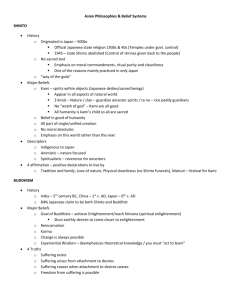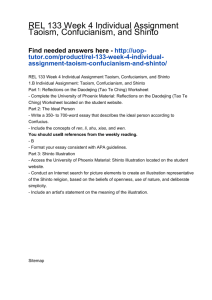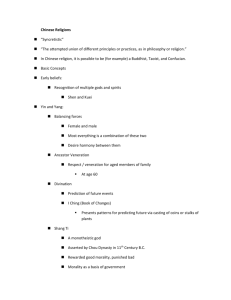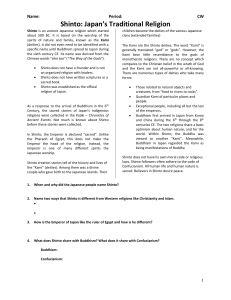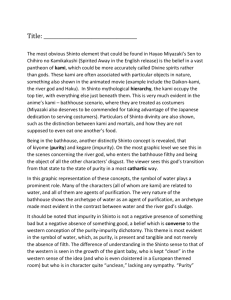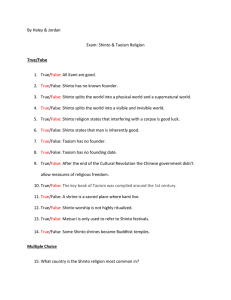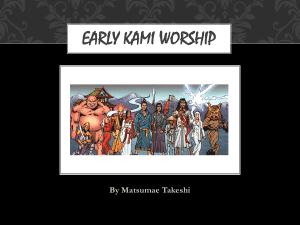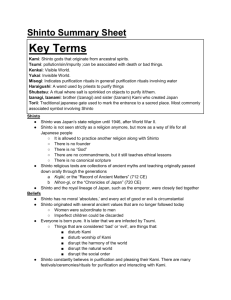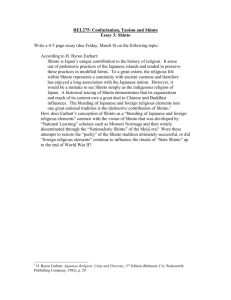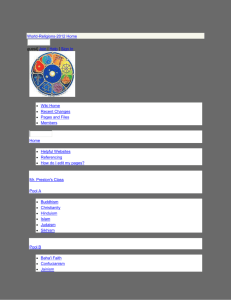SHINTO
advertisement
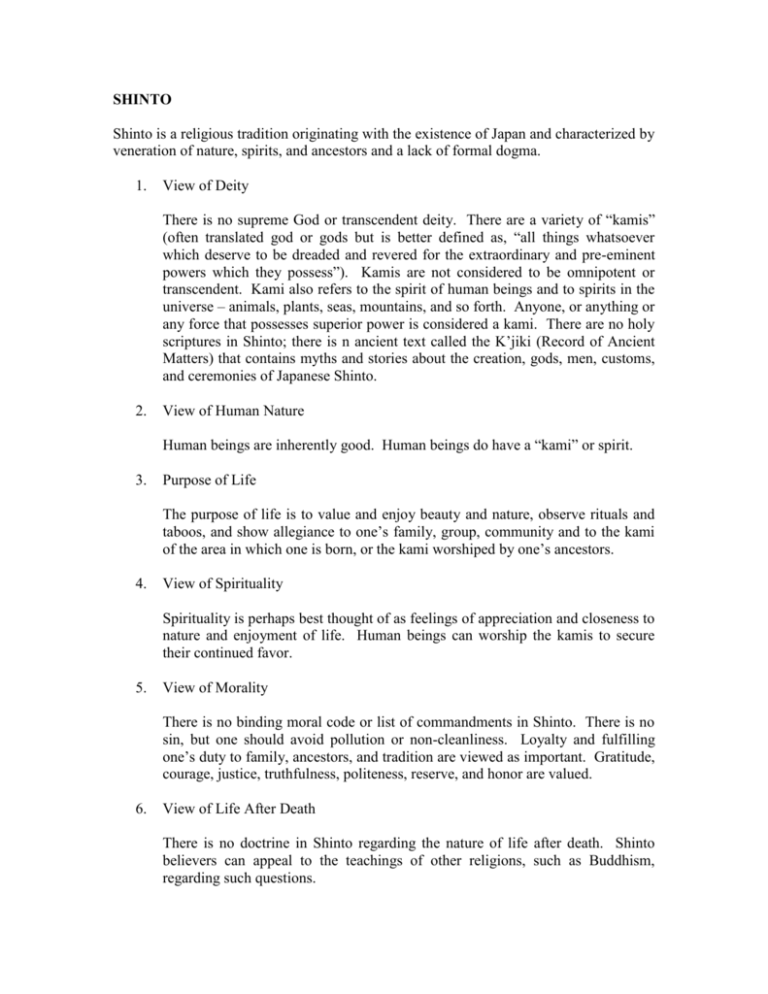
SHINTO Shinto is a religious tradition originating with the existence of Japan and characterized by veneration of nature, spirits, and ancestors and a lack of formal dogma. 1. View of Deity There is no supreme God or transcendent deity. There are a variety of “kamis” (often translated god or gods but is better defined as, “all things whatsoever which deserve to be dreaded and revered for the extraordinary and pre-eminent powers which they possess”). Kamis are not considered to be omnipotent or transcendent. Kami also refers to the spirit of human beings and to spirits in the universe – animals, plants, seas, mountains, and so forth. Anyone, or anything or any force that possesses superior power is considered a kami. There are no holy scriptures in Shinto; there is n ancient text called the K’jiki (Record of Ancient Matters) that contains myths and stories about the creation, gods, men, customs, and ceremonies of Japanese Shinto. 2. View of Human Nature Human beings are inherently good. Human beings do have a “kami” or spirit. 3. Purpose of Life The purpose of life is to value and enjoy beauty and nature, observe rituals and taboos, and show allegiance to one’s family, group, community and to the kami of the area in which one is born, or the kami worshiped by one’s ancestors. 4. View of Spirituality Spirituality is perhaps best thought of as feelings of appreciation and closeness to nature and enjoyment of life. Human beings can worship the kamis to secure their continued favor. 5. View of Morality There is no binding moral code or list of commandments in Shinto. There is no sin, but one should avoid pollution or non-cleanliness. Loyalty and fulfilling one’s duty to family, ancestors, and tradition are viewed as important. Gratitude, courage, justice, truthfulness, politeness, reserve, and honor are valued. 6. View of Life After Death There is no doctrine in Shinto regarding the nature of life after death. Shinto believers can appeal to the teachings of other religions, such as Buddhism, regarding such questions.
